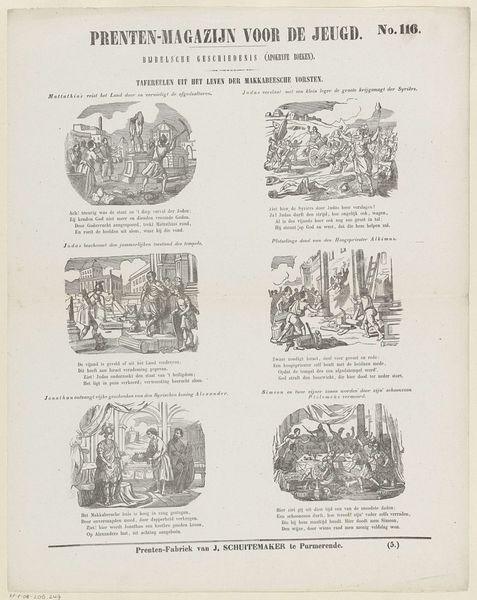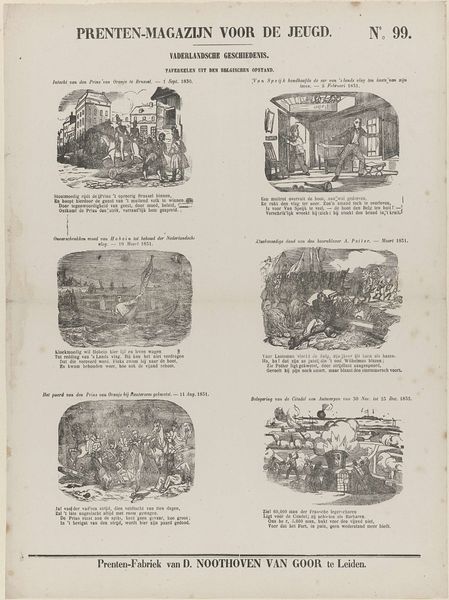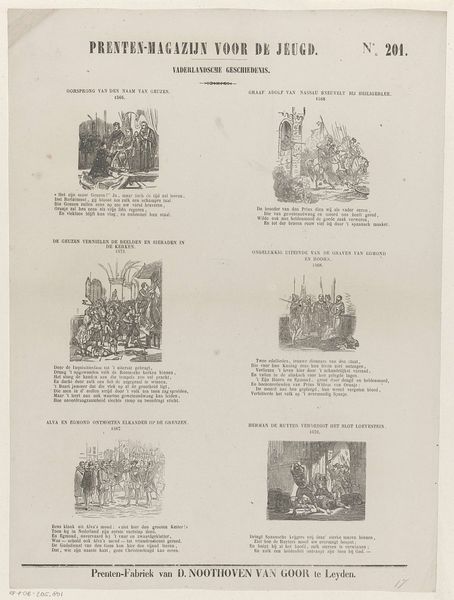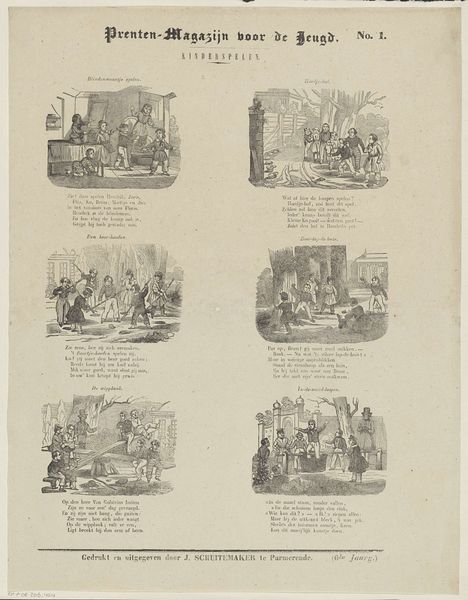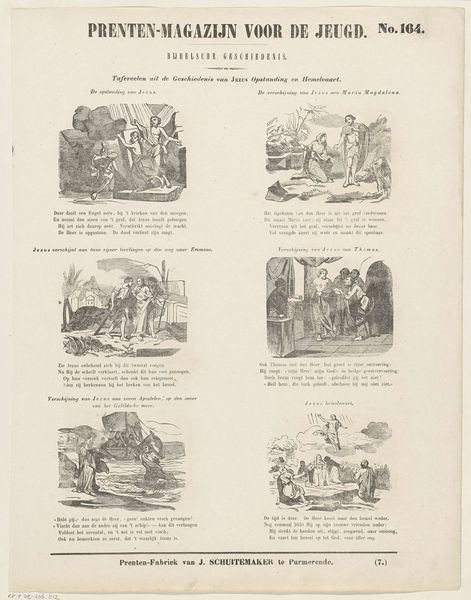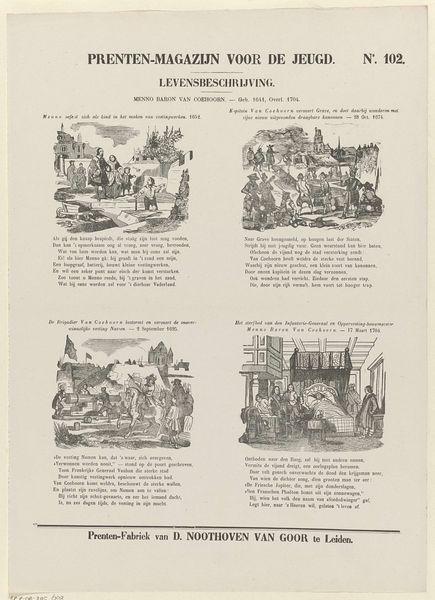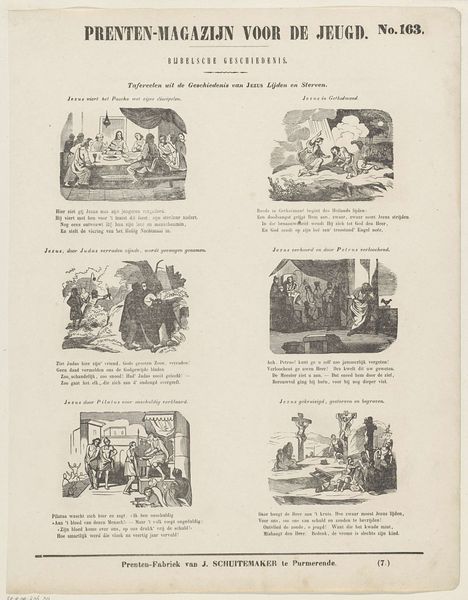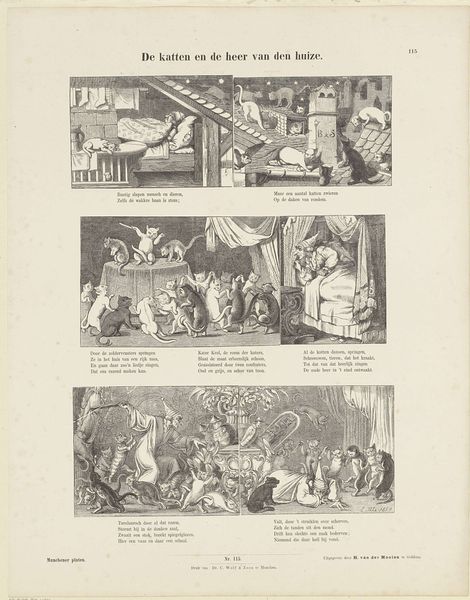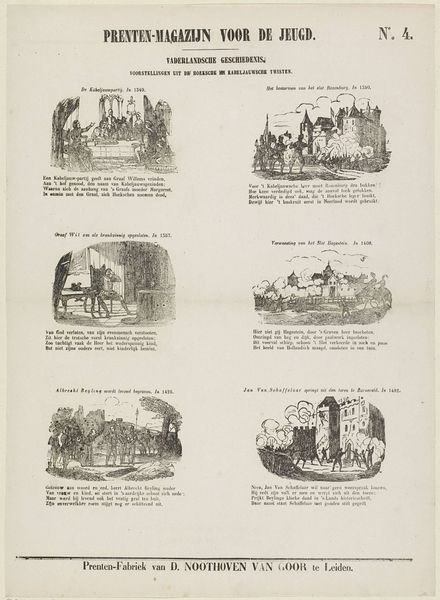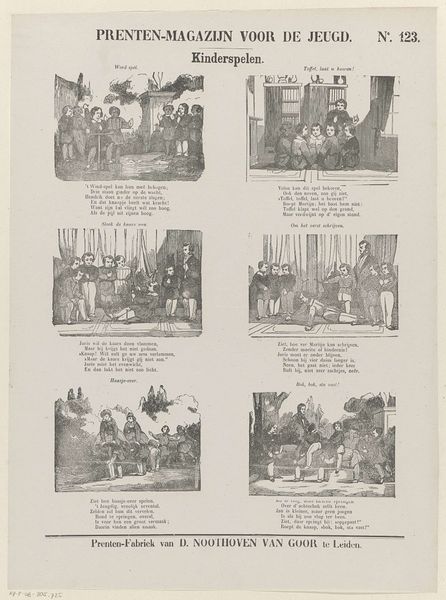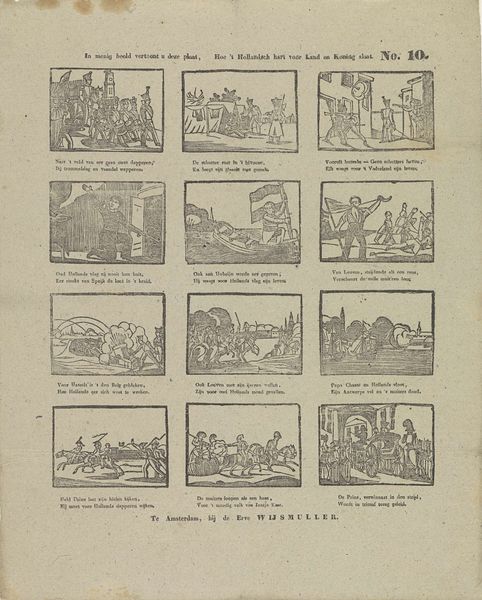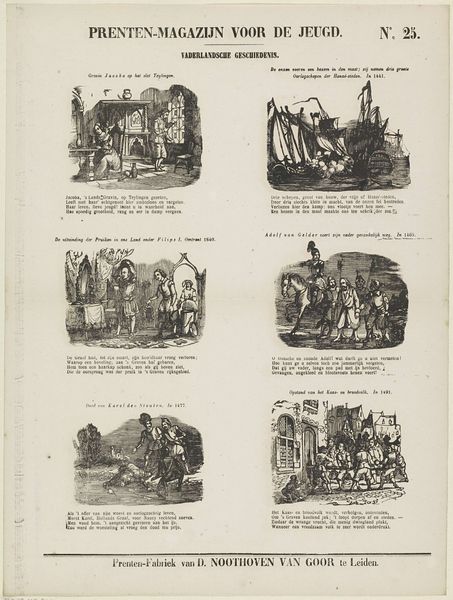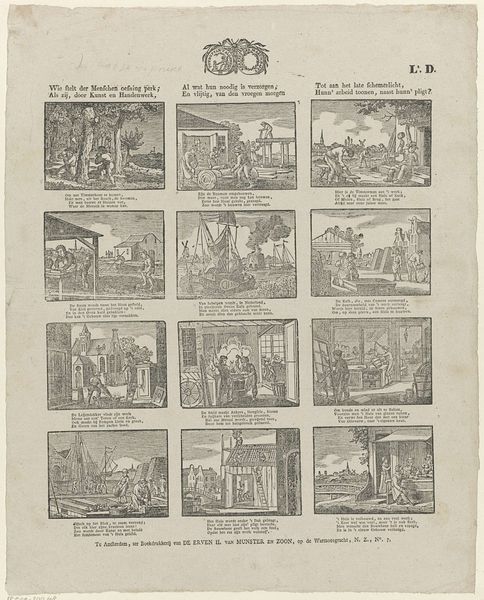
graphic-art, print, engraving
#
graphic-art
#
narrative-art
# print
#
folk-art
#
genre-painting
#
engraving
Dimensions: height 406 mm, width 333 mm
Copyright: Rijks Museum: Open Domain
Curator: Look at this print, "Kinderspelen," created around 1850 by Jan Schuitemaker. It’s an engraving featuring a series of scenes depicting children at play. What's your first reaction to it? Editor: It has a slightly melancholic feel, even with all the depictions of games. The monochromatic quality and somewhat stiff figures lend it a quaint, historical gravity, I think. Curator: Exactly, it offers a glimpse into the past through the lens of childhood recreation. I’m fascinated by the way the artist has used the graphic art medium—engraving—to reproduce these images for mass distribution to youth. The very act of printing these scenes emphasizes how art shapes even playtime. Editor: It makes me wonder about the materials used – the type of paper, the inks. Were these prints readily accessible to all children, or were they more a commodity for the burgeoning middle class? The themes themselves also speak volumes about that era's social values. Curator: That's a brilliant question. The choice of genre paintings depicting folk art, made for mass distribution, is indicative of a particular societal drive towards standardization in play. It’s interesting how these prints both reflected and influenced the formation of childhood pastimes. Editor: And think about the institutional context – a “Print-Magazine for the Youth.” This was designed not just as a piece of artwork but also a proto-educational tool, subtly conveying moral or social lessons through entertainment. The games presented might've had didactic aims. Curator: Certainly! And it underscores the evolving perception of childhood itself, shifting towards notions of structured, guided, and ultimately consumable forms of leisure. We see play being molded. Editor: It really brings home how deeply embedded socio-political messaging can be, even within something seemingly innocent like children's games rendered through engraving. The politics of imagery are always at play. Curator: Absolutely, "Kinderspelen" opens up conversations about how art operates as both artifact and agent of historical and cultural processes. It reveals that artistic decisions related to material processes often have strong societal ties. Editor: I leave with a sense of appreciation of the historical intersection between art, labor, and the everyday lives of children. Curator: And I with an acknowledgment of how art can be used to engage youth with prevailing social norms and values.
Comments
No comments
Be the first to comment and join the conversation on the ultimate creative platform.
